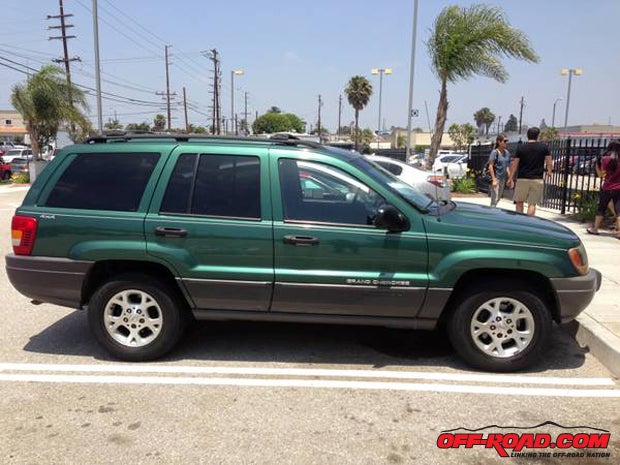
It's almost hard to believe the Grand Cherokee has been in the Jeep lineup for over 20 years now. First officially introduced in 1992 as a 1993 model, the first incarnation of the Grand – the ZJ (1993-98) – was created to compete with the popular Ford Explorer. The unibody-designed Jeep was actually in development for many years before it was finally unveiled, and it played a huge part in the massive growth of the SUV market – and Chrysler’s success.
In 1999, Jeep completely redesigned the Grand Cherokee for the second-generation model that is tabbed the WJ (1999-2004). It was a complete overhaul and shared very few parts with the ZJ. Jeep updated the inline six-cylinder engine to increase its horsepower output by 10 to 200 horsepower, and it also got rid of the pushrod V8 motors and replaced them with its new PowerTech V8s, which didn’t produce as much horsepower but was lighter and boasted improved fuel economy (though later proved to not be the most reliable engine). Jeep then made a major redesign in 2011 and earned many awards for the fourth-gen Grand Cherokee. In spite of its great success, Jeep surprisingly made some more changes in 2014, including the addition of a 3.0-liter diesel motor and a host of exterior and interior features. Although the new Grand Cherokees have come a long way in offering luxurious features, some felt the third-generation Grand Cherokee (WK, 2005-2010) marked a major shift away from true off-road capability when it shifted from a live-axle in the WJ to independent wishbone suspension up front.
In a way, the WJ Grand Cherokee might be considered by some Jeep purists to be the last Grand Cherokee that’s still a “Jeep.” There are tons of WJs still out there, and most importantly they can be found relatively inexpensively. Although the new Grand Cherokees are well-equipped machines and still capable of tackling minor off-road excursions, a more realistic and significantly cheaper off-road build would be to venture back to the WJ days and build a trail-worthy Grand Cherokee on that platform. It’s with this in mind that we set out to begin our WJ Project. Having owned a TJ where space is at a premium, the WJ looks like a bus in terms of storage and passenger space compared to the small cab of the TJ. While the idea of added space is a great prospect, in comparing the WJ to the a TJ Wrangler, that space comes at the price of off-road ability on the trail.
For our project, we wanted to build a capable WJ Grand Cherokee that still could be used as a daily driver. Getting it trail-ready is a more daunting task than souping up a TJ, however, as there are some considerable limitations to the road-friendly Grand Cherokee WJ. We found a 1999 Grand Cherokee in pretty decent condition on Craigs List and purchased it for a few thosands dollars (a little over $2,000 to be more precise). It was equipped with the inline-six 4.0-liter motor, which we preffered the often troubled V8s on the WJ. We also wanted the NV-242 Selec-Trac transfer case, as this is the only one on the WJ with the option of moving out of full-time 4WD into 2WD.
We wanted to lift the WJ but while still keeping a low center of gravity for good on- and off-road handling characteristics. After some searching, we turned to BDS Suspension for its 4-inch WJ kit, as we’ve heard great things about the company’s products and were exited to try them firsthand (we’ll highlight the lift more in our next phase of the project). If there's one downside to any 4-inch lift kit for the WJ it's that it can only realistically fit 31-inch tires. We didn’t want move up to a 6-inch kit and sactifice our low COG, but 31s still were too small for what we wanted. We found the perfect solution in Bushwacker’s WJ Cut-Out Fender Flares, which would allow us to fit 33s with our 4-inch BDS kit.
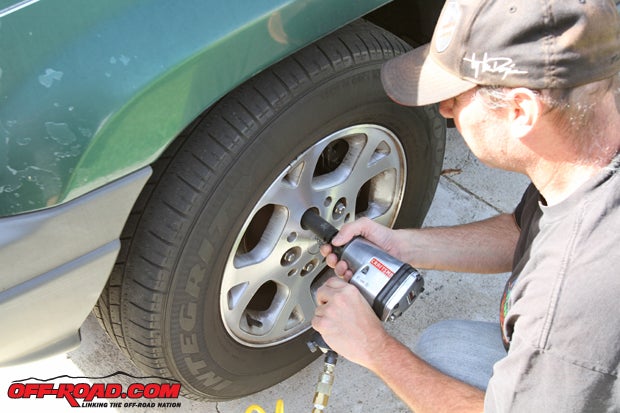
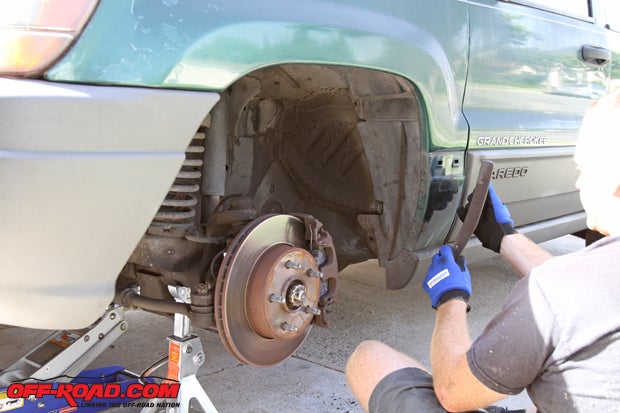
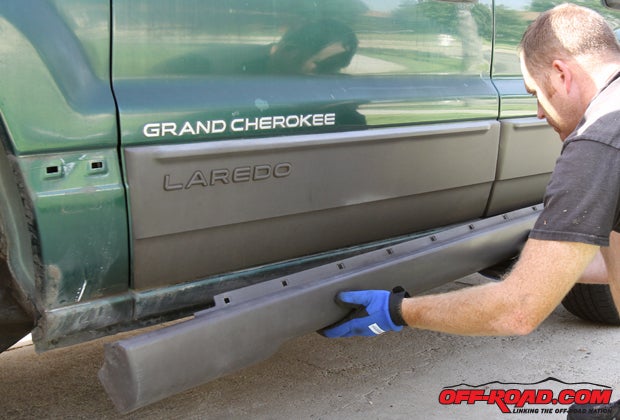
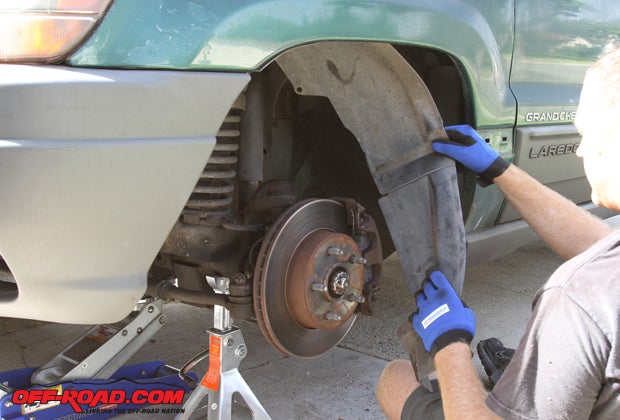
The Bushwacker Cut-Out Fender Flares are designed to add up to 1.25 inches of tire coverage. The kit is not a simple bolt-on application though; it is much more detailed, as the “cut-out” portion of the name refers to the actual cutting of some sheet metal. Since our WJ only cost us a few thousand dollars, this made us much less worried about trying our hand at our first Bushwacker install.
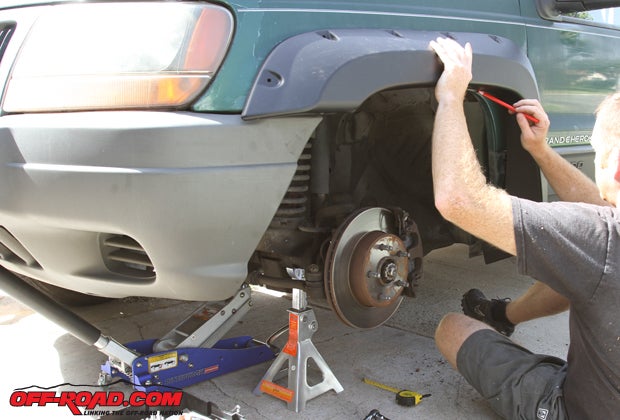
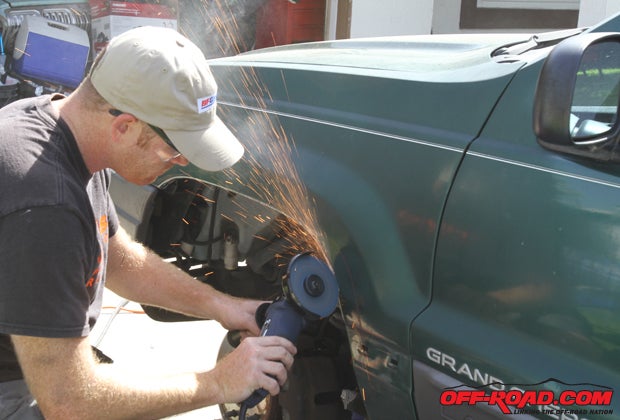
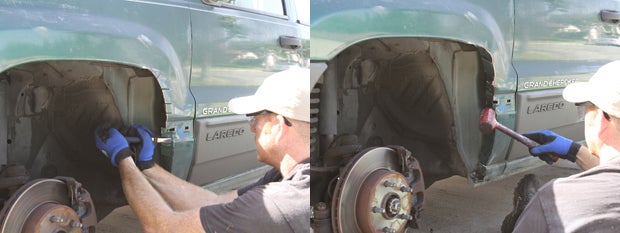
Bushwacker includes detailed instructions on every step of the process with each kit. Included in our WJ kit are OEM-quality textered black front and rear bumpers that are constructed of UV-protected Dura-Flex 2000 TPO (Thermoplastic Poly-Olefin), complete stainless-steel hardware, fender trimming, a torx nut fitting (for the flare screws), edge trimming tool, molding, double-sided tape and all of the additional hardware necessary for a complete installation. Bushwacker also lists the suggested tools needed for installation:
- Grease Pencil or Scribe
- Heavy Hammer
- Reciprocating Saw/Cut Wheel
- Pliers, Sheet Metal Pliers
- Electric Drill
- 3/32”, 3/16”, 1/8”, 1/4" Drill Bits
- #2 Phillips Screwdriver
- Utility Knife
- Angle Grinder/Sand Paper
- Urethane Caulking/Sealant
- Measuring Tape
- Heat Gun
- Socket Wrench, with 3/8”, 5/16” and 10mm Deep Socket
- 3” Socket Extension
- Torque Wrench/Impact Wrench
- Masking Tape
- Pry Tool
- Car Jack Stands
- Awl
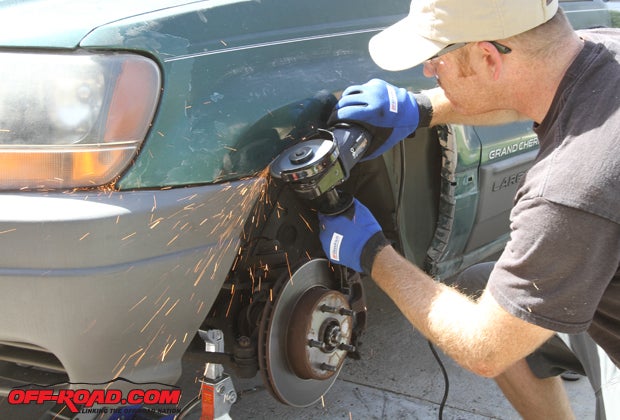
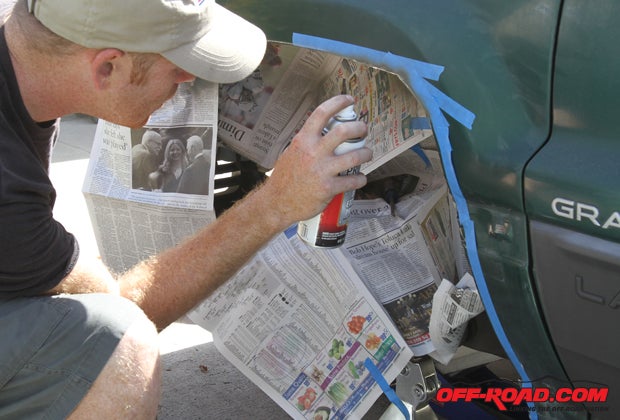
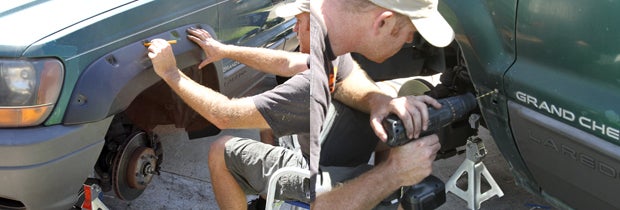
For all its products, Bushwacker provides a limited lifetime warranty against manufacturing defects (with provided proof of purchase). The kits are also made in the USA.
Before we started the installation of the Bushwacker flares, we were faced with a decision. Although this would be a weekend adventure vehicle, it still would be driven during the week as well. Being that our 1999 WJ lived its life near the California coast, the salinity in the air can eat up paint jobs pretty quickly, and the paint on the driver’s side was starting to oxidize. We wanted to potentially paint the vehicle to freshen up its look, but we also didn’t want to break the bank so early in the project. Doing paint before installing the fender flares made the most sense, though, so we decided to explore paint options before starting on the flare installation.
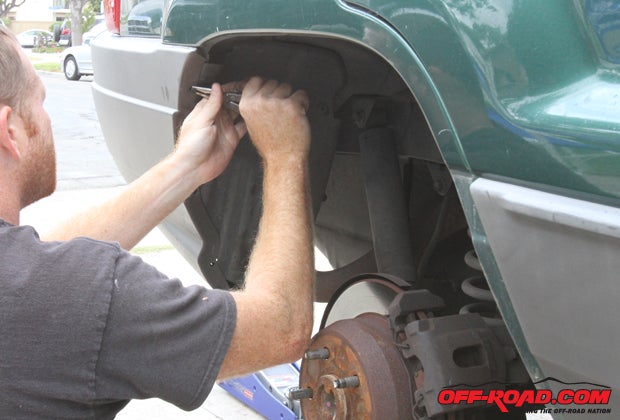
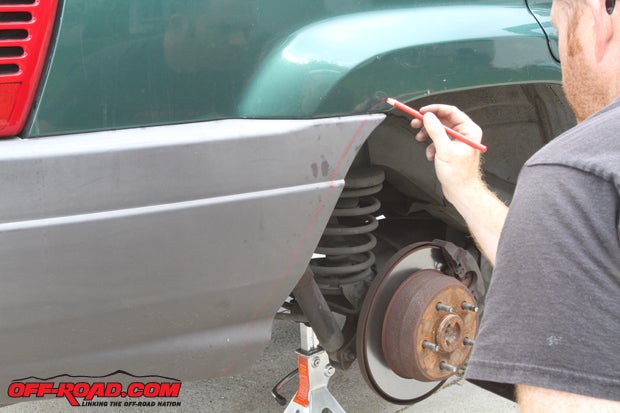
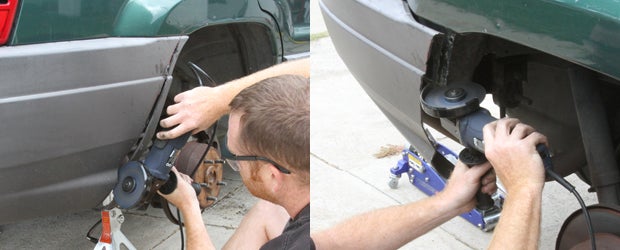
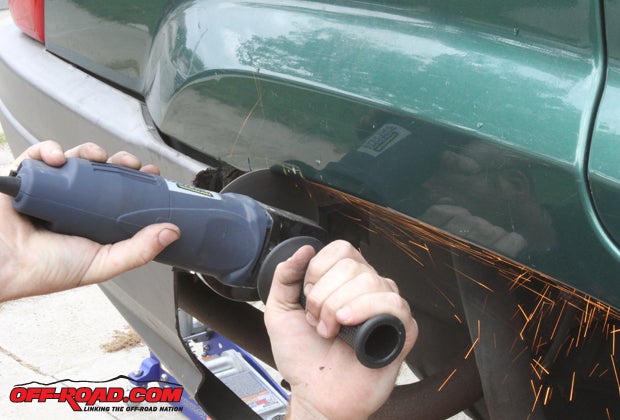
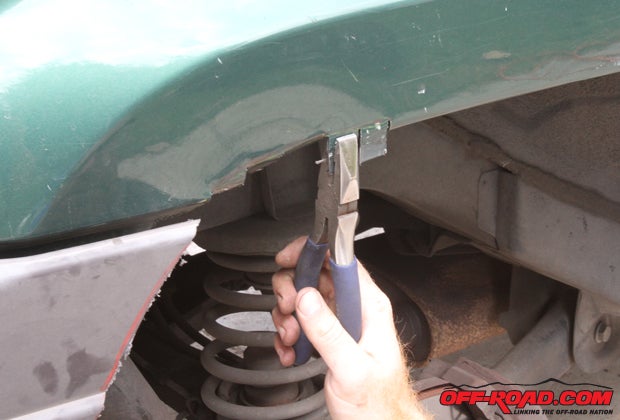
We hunted around at quite a few paint and body shops, getting approximate quotes in the $2500 to $5000 range, which was way out of our budget. Eventually our searching ended up at a local MAACO, which seemed to offer more reasonable pricing for paintjobs. The parent company itself has been in business providing auto body repair and paint since it was founded in 1972, though each location is individually owned and operated. We spoke with Ryan Capdevielle, who owns and operates both the Costa Mesa locations in Southern California. We explained our situation that we wanted to get a decent paint job but didn’t want to break the bank, and Ryan and his staff were receptive to our situation and didn’t try to oversell us.
MAACO offers a number of different paint options, going as low as about $400 (or even $300 when they're running promotions) for a non-clear-coat paintjob and then going as high as $2500 for all the bells and whistles. Although this would be a trail vehicle that is sure to get some weathering over the coming years, we didn’t want something without clear coat that would nick and scratch easily. So, we opted for the $999 option, which is a base coat and a clear coat finish on top. The price is actually $1199 for our vehicle, though, since it's an additional $200 for our larger SUV (the $999 quote is for traditional sedans). Although the Jeep has a few minor dings and knicks we didn't need any major body work but went with the chip and scratch repair ($100), and we also opted the additional sealant to help protect the paint (also an extra $100). There are a number of options available, including getting the door jams painted, hood and rear door latches, color sand and polish that can be added on, but for our needs, we felt like we found the right blend of a quality paint job that wasn't going to break the bank at $1400.
We were surprised to see the number of vehicles heading in and out of the MAACO - everything from vintage cars to tuner cars, trucks, sedans and full restorations. Since the shop does both body work as well as paint, Capdevielle told us that his customers range from simple jobs to extremetly complex ones.
“We have a wide range of customers that walk through our doors. I get people who come in who don’t want to do any prep on their car, and with the special that we have from time to time, they say I just want to spend $300 like the offer says and that's it," he explains. "Then I have other people who want to do it right, want to do the color sand and buff, and then it’ll be closer to $2000 for that type of job. Sometimes we’ll get people who come in and want parts of their car shot, or maybe just the bumpers shot. Basically it’s almost like a Subway sandwiches type of option – however you want to order it, we’ll do it that way. We do framework, restorations, metal work and replacement. You name it, we do it all the time."
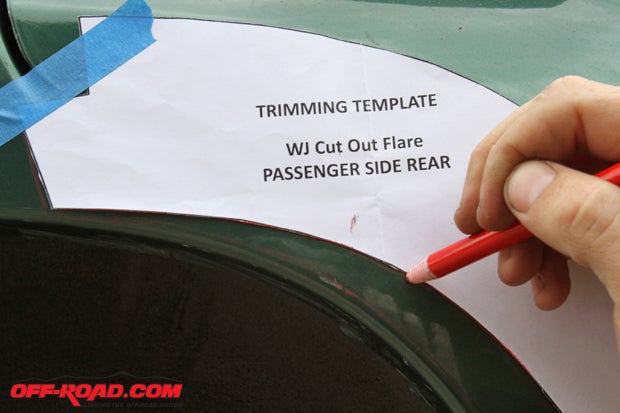
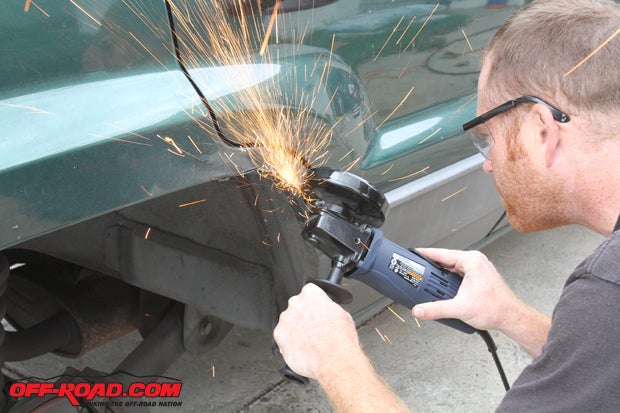
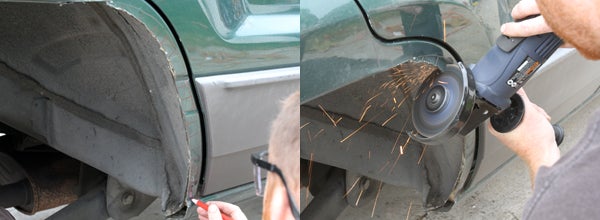
Next Page... Jeep Grand Cherokee: Bushwacker Flares, Maaco Paintjob Continued


 Your Privacy Choices
Your Privacy Choices